
Genus Axis
Spotted Deer (Axis axis)
The Chital or cheetal (Axis axis), also known as the spotted deer, chital deer, and axis deer, is a deer species native to the Indian subcontinent. It was first described and given a binomial name by German naturalist Johann Christian Polycarp Erxleben in 1777. A moderate-sized deer, male chital reach 90 cm (35 in) and females 70 cm (28 in) at the shoulder. While males weigh 70–90 kg (150–200 lb), females weigh around 40–60 kg (88–132 lb). It is sexually dimorphic; males are larger than females, and antlers are present only on males. The upper parts are golden to rufous, completely covered in white spots. The abdomen, rump, throat, insides of legs, ears, and tail are all white. The antlers, three-pronged, are nearly 1 m (3 ft 3 in) long.
The vernacular name "chital" comes from cītal (Hindi: चीतल), derived from the Sanskrit word citrala (चित्रल), meaning "variegated" or "spotted". The name of the cheetah has a similar origin. Variations of "chital" include "cheetal" and "cheetul". Other common names for the chital are Indian spotted deer (or simply the spotted deer) and axis deer.
The chital was first described by Johann Christian Polycarp Erxleben in 1777 as Cervus axis. In 1827, Charles Hamilton Smith placed the chital in its own subgenus Axis under the genus Cervus. Axis was elevated to generic status by Colin P. Groves and Peter Grubb in 1987. The genus Hyelaphus was considered a subgenus of Axis. However, a morphological analysis showed significant differences between Axis and Hyelaphus. A phylogenetic study later that year showed that Hyelaphus is closer to the genus Rusa than Axis. Axis was revealed to be paraphyletic and distant from Hyelaphus in the phylogenetic tree; the chital was found to form a clade with the barasingha (Rucervus duvaucelii) and the Schomburgk's deer (Rucervus schomburgki). The chital was estimated to have genetically diverged from the Rucervus lineage in the Early Pliocene about 5 million years ago.
Fossils of extinct Axis species dating to the early to Middle Pliocene were excavated from Iran in the west to Indochina in the east. Remains of the chital were found in the Middle Pleistocene deposits of Thailand along with sun bear, Stegodon, gaur, wild water buffalo and other living and extinct mammals.
The chital ranges over 8–30°N in India and through Nepal, Bhutan, Bangladesh, and Sri Lanka. The western limit of its range is eastern Rajasthan and Gujarat. The northern limit is along the Terai belt of the foothills of the Himalaya and from Uttar Pradesh and Uttaranchal through to Nepal, northern West Bengal and Sikkim and then to western Assam and the forested valleys of Bhutan, which are below an elevation of 1,100 m (3,600 ft). The eastern limit of its range is through western Assam to the Sunderbans of West Bengal and Bangladesh. Andaman and Nicobar Islands and Sri Lanka are the southern limits. Chital occur sporadically in the forested areas throughout the rest of the Indian peninsula. Within Bangladesh, it currently only exists in the Sundarbans and some ecoparks situated around the Bay of Bengal, as it became extinct in the central and north-east of the country.
Indian Spotted Deer or Chital (Axis axis axis) - Seen in many locations in India and domesticated internationally

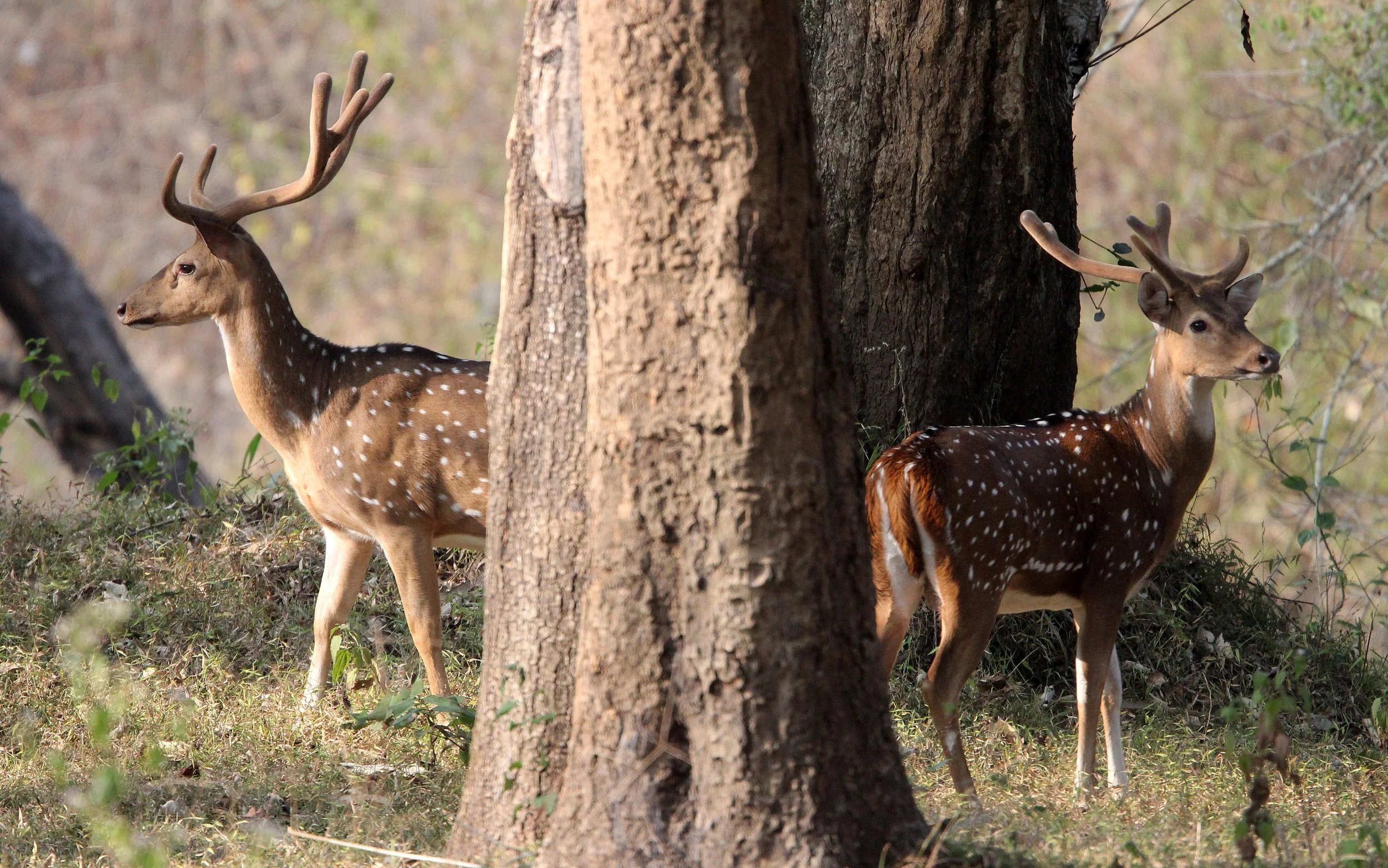







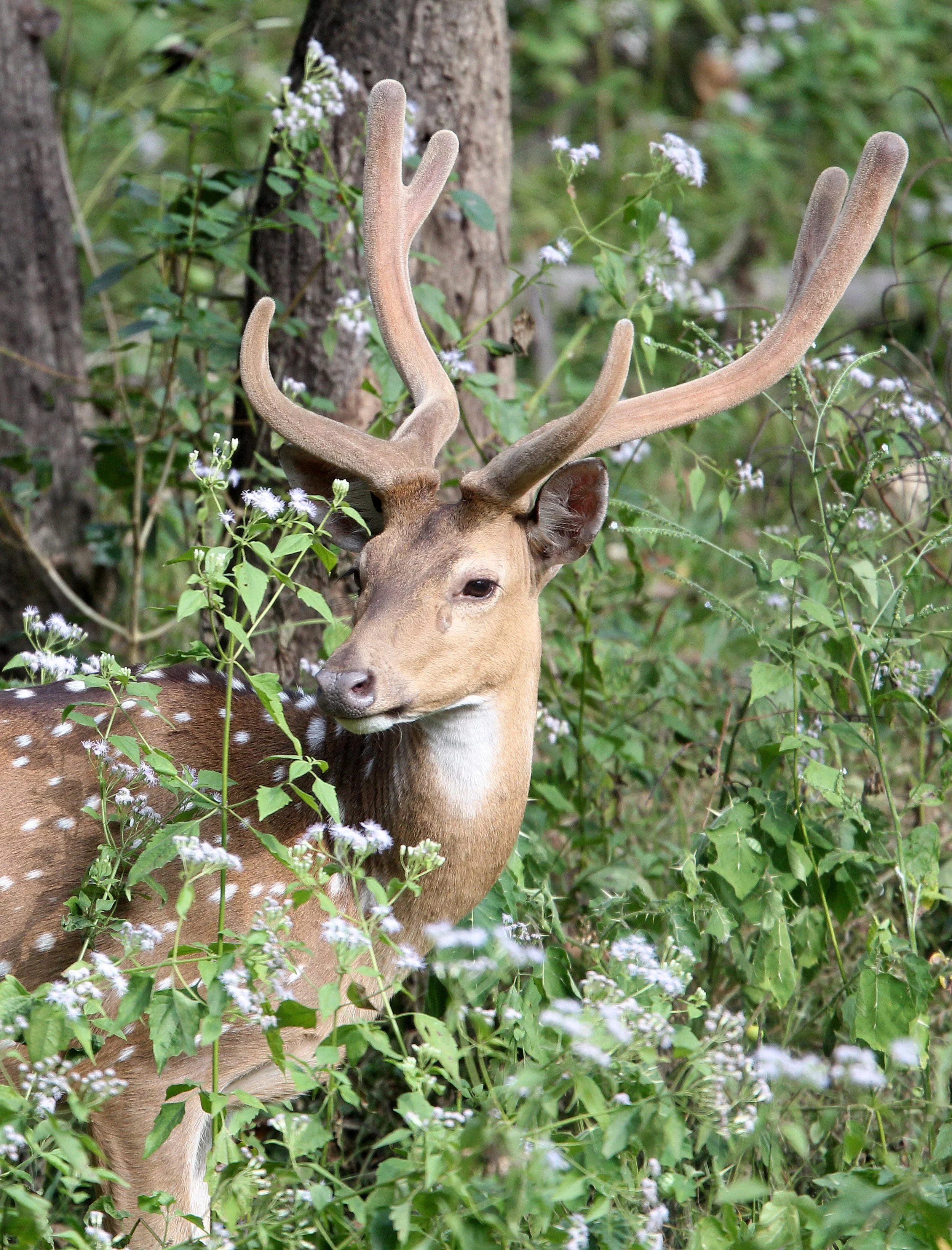











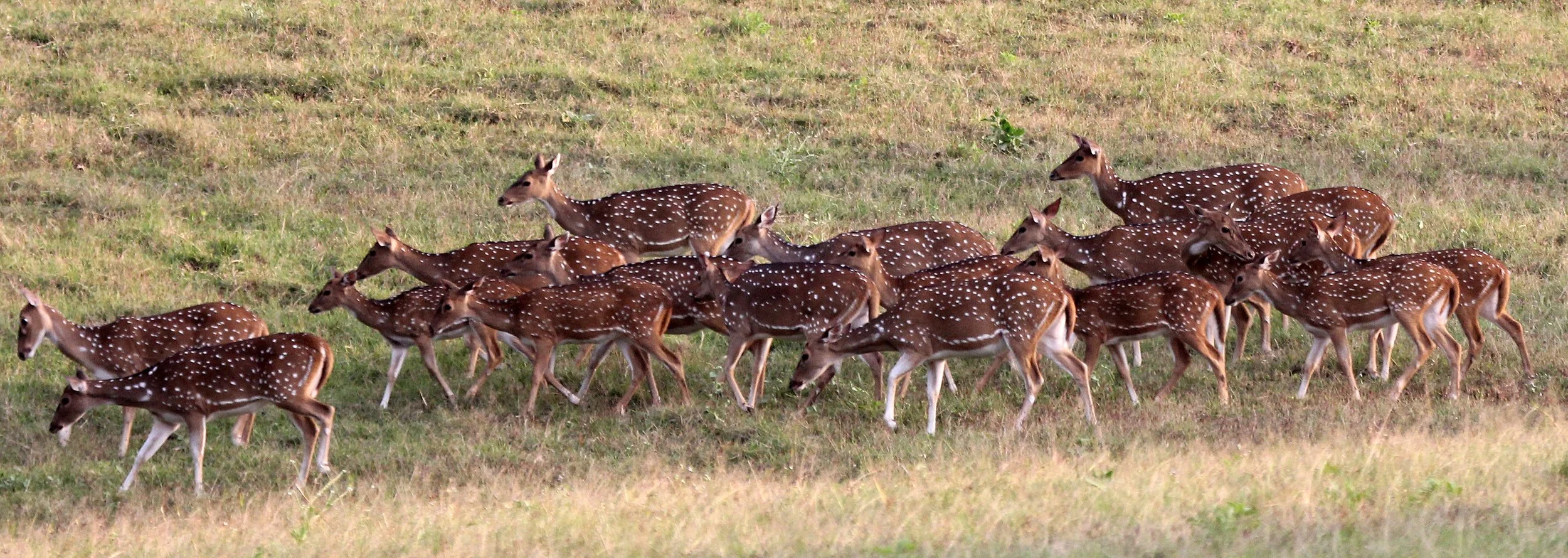

















































Sri Lanka Spotted Deer (Axis axis ceylonensis) - Seen in Yala National Park primarily in Sri Lanka




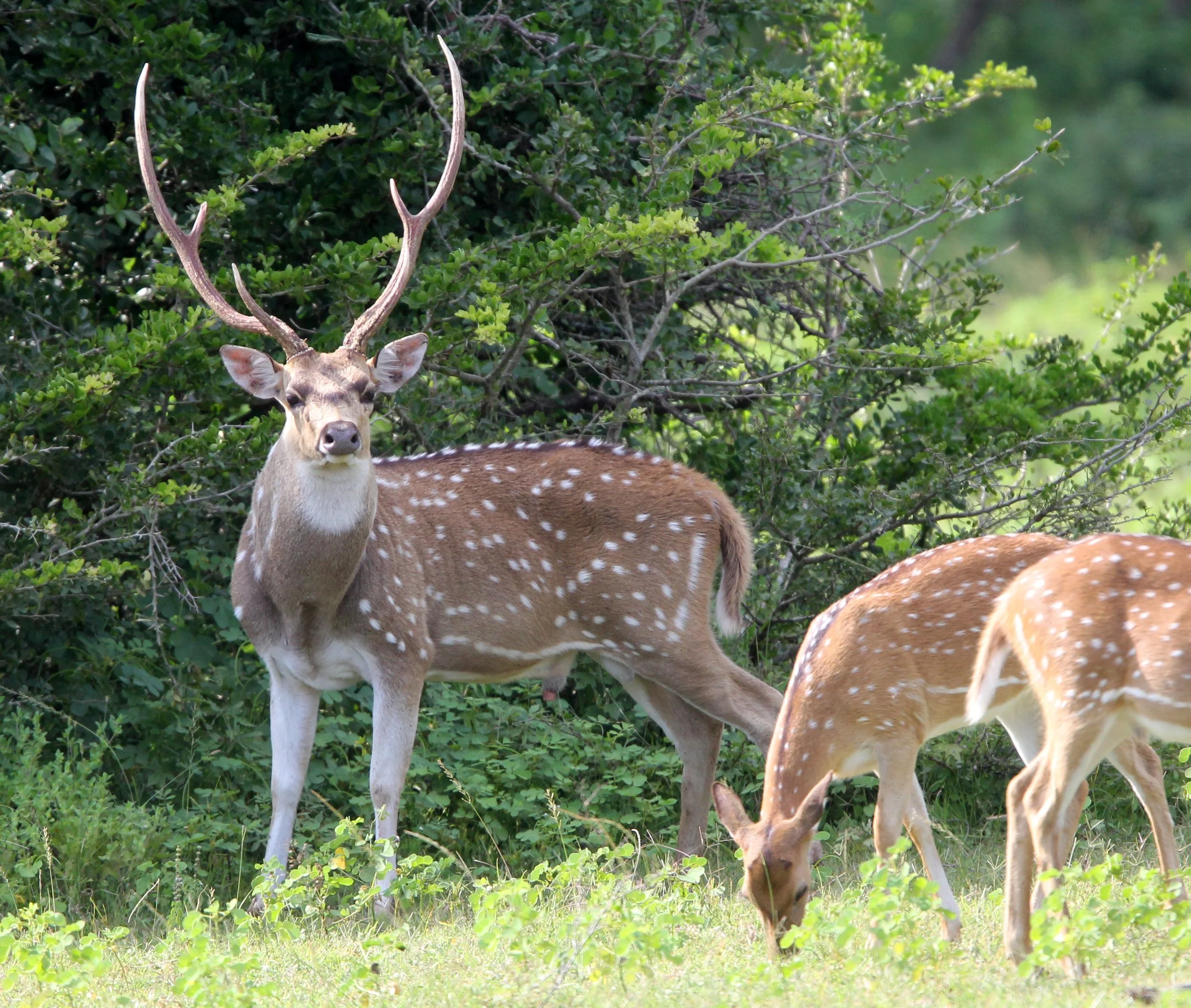

















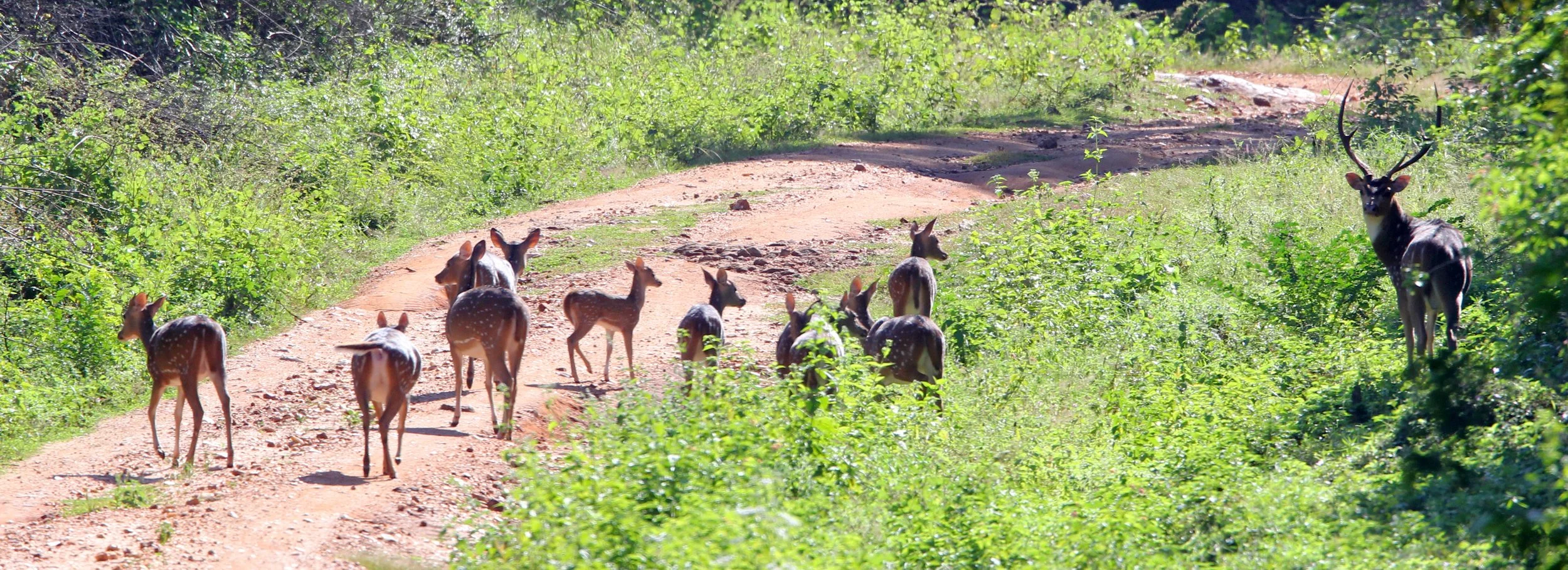










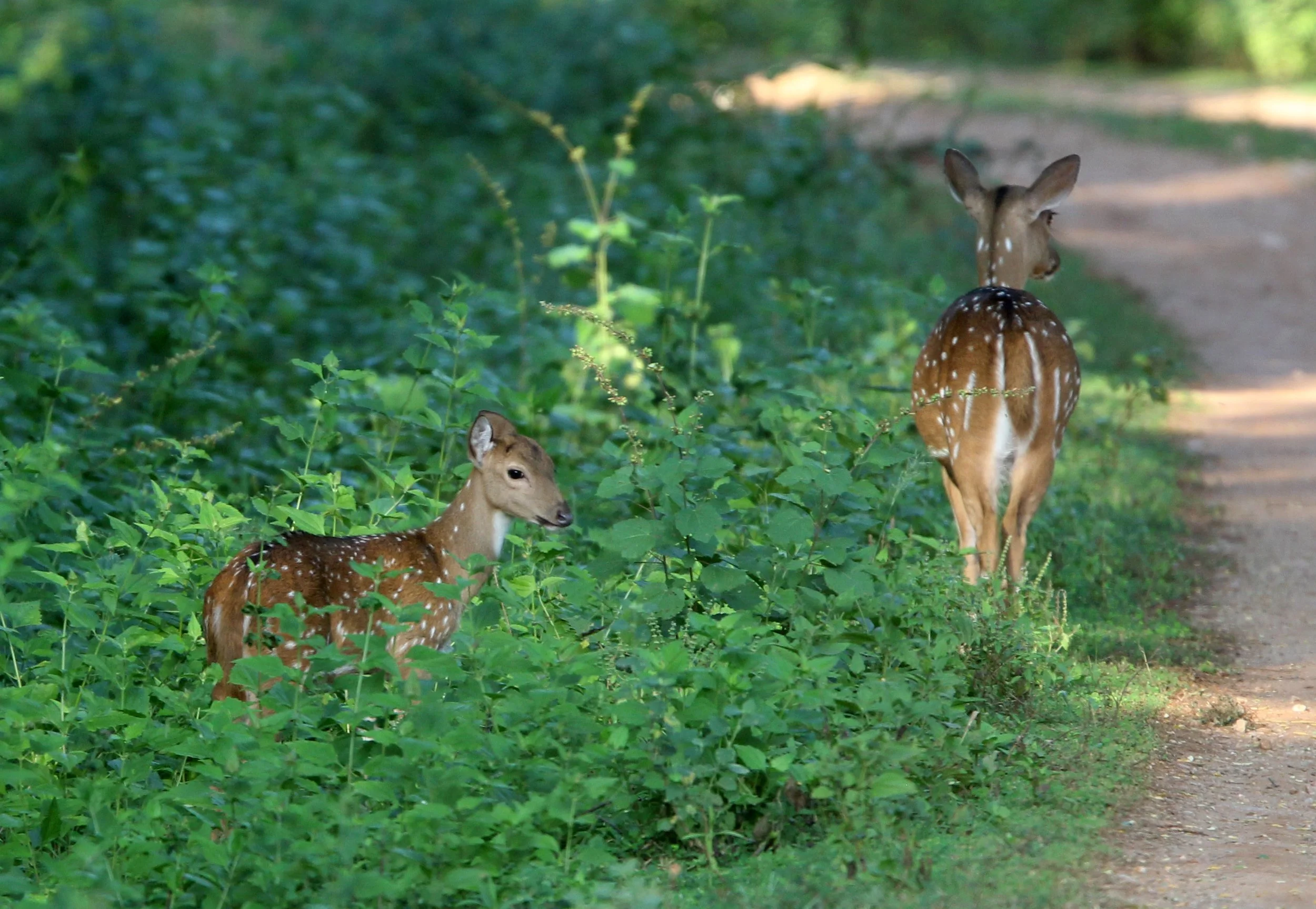
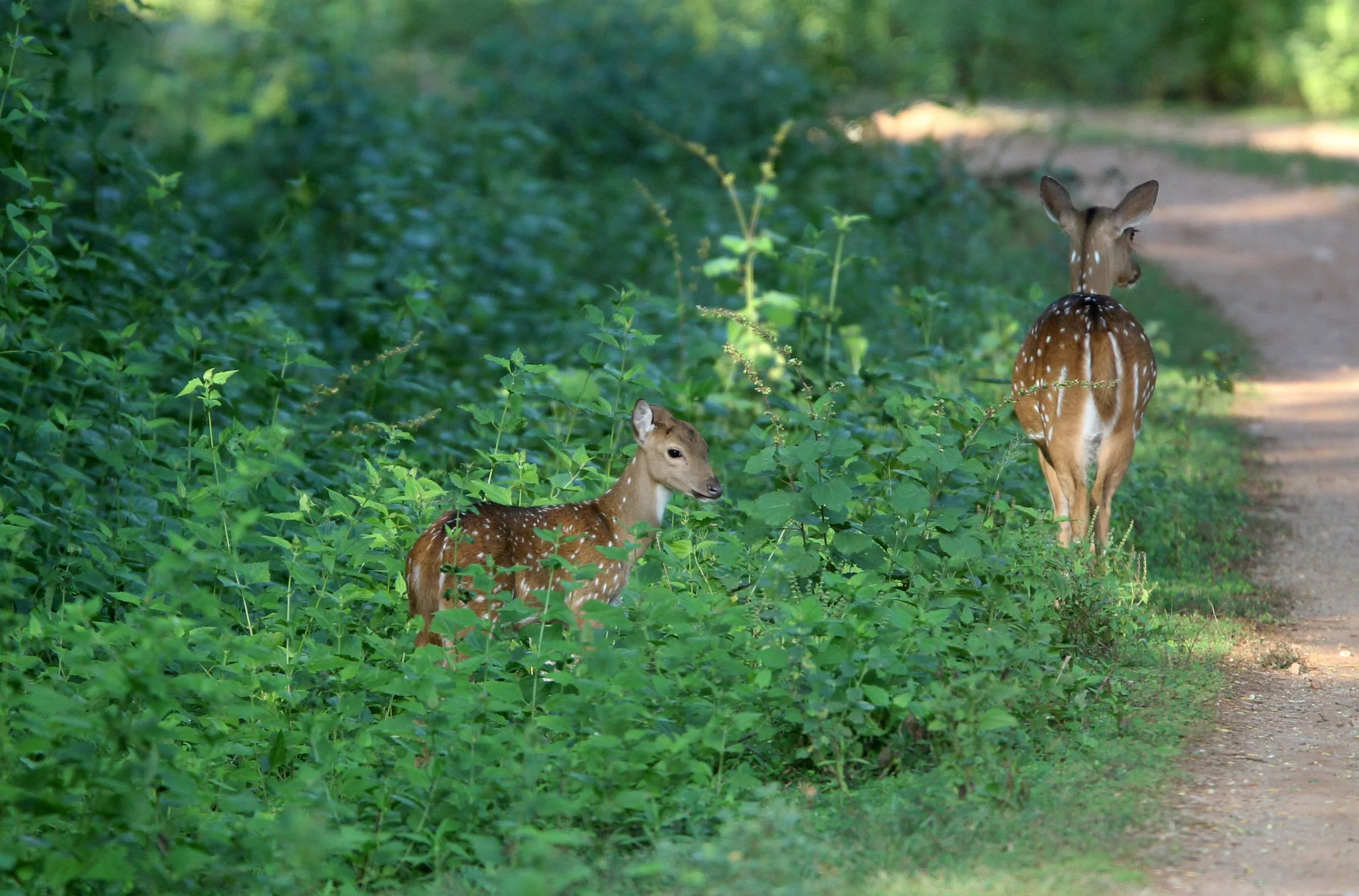



Indian Hog Deer (Axis porcinus)
The Indian Hog Deer (Axis porcinus) is a small deer native to the Indo-Gangetic Plain in Pakistan, northern India, Nepal, Bangladesh to mainland Southeast Asia. It also occurs in western Thailand, and is possibly extirpated from China (in southwestern Yunnan Province), Myanmar, Laos, and Vietnam. Introduced populations exist in Australia, as well as the United States (in Texas, Hawaii, and Florida), and Sri Lanka (where its native status is disputed).
Its name derives from the hog-like manner in which it runs through forests (with its head hung low), to ease ducking under obstacles instead of leaping over them, like most other deer.
Cervus porcinus was the scientific name used by Eberhard August Wilhelm von Zimmermann in 1777 and 1780, based on an earlier description of Indian hog deer brought to England from India. It was placed in the genus Axis by William Jardine in 1835 and by Brian Houghton Hodgson in 1847. In 2004, it was proposed to be placed in the genus Hyelaphus. The proposal has not been accepted, with most authors keeping it under Axis. A subspecies, A. p. annamiticus, was once considered its own species, but is now generally considered the same species as A. porcinus.
Indochines hog deer (Axis annamiticus) - Southeast Asian Subspecies seen in Huai Khai Khaeng and Phu Kieow Thailand. Many now consider this a valid species in itself - Axis annamiticus.

































































Indian hog deer (Axis porcinus ) Kaziranga Assam India









